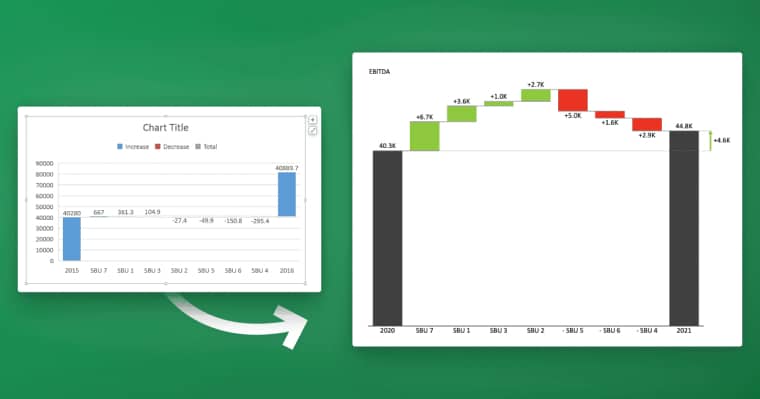Calculating variance is an important statistical measure that can help you better understand and analyze your data in Excel. In this article, we’ll take a comprehensive look at how to find variance in Excel, including an overview of the concept, why it’s important, and step-by-step instructions for performing calculations.
Table of Contents
Understanding the Concept of Variance in Excel
Variance is a measure of how spread out a set of data is. It quantifies how far the data points are from the mean value, which represents the average of all the values in a dataset. A high variance indicates that the data points are widely spread out, whereas a low variance means that the data points are tightly clustered around the mean.
Excel provides several functions to calculate variance, including VAR, VAR.S, and VAR.P. The VAR function calculates variance based on a sample of data, while VAR.S calculates variance based on the entire population. VAR.P is used to calculate variance for a population when the entire population is available.
Understanding variance is important in data analysis because it helps to identify the degree of variability in a dataset. This information can be used to make informed decisions and draw meaningful conclusions from the data. For example, if the variance of a dataset is high, it may indicate that the data is not consistent and may require further investigation to identify any underlying patterns or trends.
Why Variance is Important in Data Analysis
Variance is an important statistical measure that can help you make sense of your data. By understanding the variance of your data, you can better identify trends, patterns, and outliers. For example, if you’re analyzing sales figures for a business, you might use variance to identify which products are selling well and which ones are performing poorly.
Another reason why variance is important in data analysis is that it can help you determine the reliability of your data. A low variance indicates that your data points are clustered closely together, which suggests that your measurements are consistent and reliable. On the other hand, a high variance indicates that your data points are more spread out, which suggests that your measurements may be less reliable.
Furthermore, variance can also be used to compare different sets of data. For instance, if you’re comparing the performance of two different marketing campaigns, you can use variance to determine which campaign had a greater impact on sales. By calculating the variance of the sales figures for each campaign, you can see which one had a greater degree of variation and therefore had a greater impact on sales.
Overview of the Variance Function in Excel
Excel provides a variety of functions that you can use to calculate variance. The most commonly used functions are VAR and VAR.S. The VAR function calculates variance based on a sample of data, whereas the VAR.S function calculates variance based on the entire population of data.
It is important to note that when using the VAR function, Excel assumes that the sample data represents the entire population. This can lead to inaccurate results if the sample size is not large enough or if the data is not representative of the entire population. In such cases, it is recommended to use the VAR.S function to calculate variance based on the entire population of data.
Step-by-Step Guide to Calculating Variance in Excel
To calculate variance in Excel, you’ll first need to organize your data into a table with a column of values. Once you’ve done that, follow these steps:
- Select an empty cell where you want to display the variance result
- Type the formula “=VAR.S(range)” or “=VAR(range)” where “range” is the range of cells that contain your data
- Press enter to calculate the result
It’s important to note that the variance formula in Excel calculates the sample variance, not the population variance. If you want to calculate the population variance, you’ll need to use a different formula.
Additionally, Excel has a built-in function called “STDEV.S” that calculates the standard deviation of a sample. You can use this function to calculate the square root of the variance, which will give you the standard deviation of your data set.
Using the VAR and VAR.S Functions for Variance Calculation
The VAR and VAR.S functions are similar to each other, but they differ in how they treat the data. The VAR function is used for datasets that are a sample of the population, whereas the VAR.S function is used for datasets that represent the entire population. In general, it’s best to use the VAR.S function unless you know that you’re working with a sample.
When using the VAR function, it’s important to note that it calculates the variance using the formula for a sample, which means that it divides by n-1 instead of n. This adjustment is made to account for the fact that the sample is only a subset of the population, and therefore may not be fully representative. On the other hand, the VAR.S function calculates the variance using the formula for the entire population, which means that it divides by n.
It’s also worth noting that both functions can be used in Excel, and can be applied to a range of cells or an entire column of data. This makes it easy to calculate the variance of a large dataset without having to manually enter each value into a formula. Additionally, Excel provides a number of other statistical functions that can be used in conjunction with VAR and VAR.S to perform more complex analyses.
How to Interpret Variance Results in Excel
Once you’ve calculated variance in Excel, you’ll need to interpret the result. If the variance is high, it means that the data points are spread out and the dataset has a large degree of variability. If the variance is low, it means that the data points are tightly clustered around the mean and the dataset has a low degree of variability.
It’s important to note that interpreting variance results is highly dependent on the context of the data being analyzed. For example, in finance, a high variance in stock prices may indicate a higher level of risk, while in manufacturing, a high variance in product dimensions may indicate a problem with quality control. Therefore, it’s crucial to consider the specific industry and purpose of the data when interpreting variance results.
Tips for Troubleshooting Common Errors When Finding Variance in Excel
If you encounter an error when calculating variance in Excel, it could be due to a number of reasons. Some common errors include using the wrong dataset, entering the formula incorrectly, or having missing data. To troubleshoot these errors, double-check your data and formulas, and try using the VAR.S function instead of the VAR function for datasets that represent the entire population.
Another common error when finding variance in Excel is using a dataset that contains outliers. Outliers are data points that are significantly different from the rest of the data and can skew the variance calculation. To address this issue, consider removing the outliers from your dataset or using a different measure of dispersion, such as the standard deviation.
Advanced Techniques for Analyzing Data using Variance in Excel
Once you’ve mastered the basics of calculating variance in Excel, you can use more advanced techniques to analyze your data. For example, you might use conditional formatting to highlight cells that fall above or below a certain variance threshold, or you might compare variance results with other statistical measures such as standard deviation or mean.
Another advanced technique for analyzing data using variance in Excel is to use regression analysis. Regression analysis allows you to determine the relationship between two or more variables and can help you identify which variables have the greatest impact on your data. By using variance in your regression analysis, you can determine how much of the variation in your data can be explained by the variables you are analyzing.
Comparing Variance with Other Statistical Measures in Excel
In addition to variance, there are other statistical measures that you can use to analyze your data in Excel. Standard deviation is another measure of variability that can help you understand how spread out a dataset is. Mean, also known as average, is a measure of central tendency that represents the middle value of a dataset.
Another statistical measure that can be useful in Excel is the correlation coefficient. This measure helps you understand the relationship between two variables in your dataset. A correlation coefficient of 1 indicates a perfect positive correlation, while a coefficient of -1 indicates a perfect negative correlation. A coefficient of 0 indicates no correlation between the variables.
How to Use Conditional Formatting with Variance Results in Excel
Conditional formatting is a powerful tool in Excel that you can use to highlight cells that meet certain criteria. For example, you might use conditional formatting to highlight cells that have a variance above a certain threshold. To do this, select the cells you want to format and choose “Conditional formatting” from the “Home” tab of the ribbon. From there, you can choose a formatting option that suits your needs.
Best Practices for Presenting and Visualizing Variance Data in Excel
When presenting variance data in Excel, it’s important to choose a visual format that effectively communicates your findings. For example, you might use a line chart to show how variance changes over time, or you might use a scatterplot to show the relationship between two variables. In general, it’s best to choose a format that is easy to interpret and visually appealing.
Common Applications of Finding Variance in Business and Finance
Finding variance in business and finance can be useful in a variety of contexts, such as predicting sales figures, assessing risk, and evaluating investment performance. By understanding the variance of your data, you can make informed decisions and identify areas for improvement.
Examples of Real-World Scenarios Where Finding Variance is Useful
Here are a few examples of real-world scenarios where finding variance in Excel is useful:
- A marketing firm uses variance to analyze website traffic data and identify which channels are driving the most leads
- A financial institution uses variance to evaluate the performance of different investment portfolios and identify which ones are yielding the highest returns
- A retail store uses variance to determine which products are selling well and which ones are underperforming, and adjust their inventory accordingly
Overall, finding variance in Excel is an essential skill for anyone working with data. By understanding the concept of variance, selecting the appropriate function in Excel, and interpreting the results correctly, you can make more informed decisions and gain valuable insights into your data.














